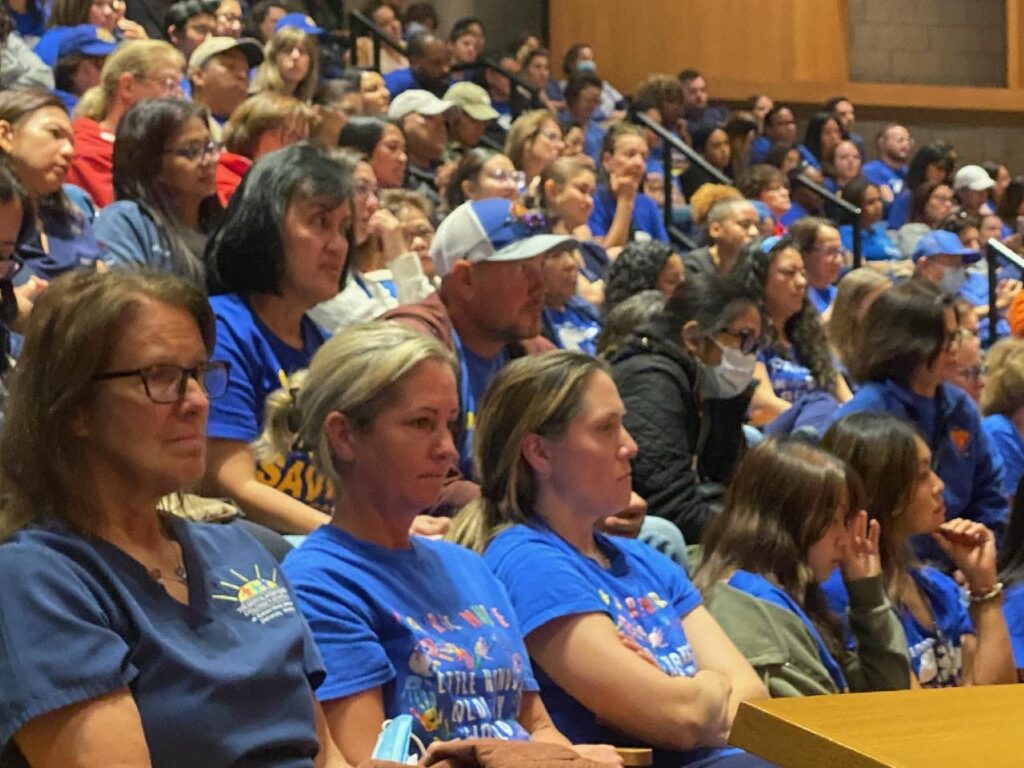RWJUH and USW Local 4-200 Nurses Reach Tenatative Deal

Robert Wood Johnson University Hospital and the United Steelworkers Nurses Local 4-200 that’s been on strike since Aug. 4 have reached a tentative contract deal, the union and hospital confirm.
“A memorandum of agreement was signed by both parties and will be presented over the next several days to union members through informational meetings as part of the ratification process,” wrote Wendy Gottsegen, the RWJUH spokesperson, in a statement. “We encourage our nurses to attend these meetings and vote at the ratification sessions. The resolution reflects our shared goals of providing the highest-quality patient care and creating a safe and supportive working environment for our nurses.”
Her statement continued. “RWJUH has the utmost respect and appreciation for our nurse colleagues and all they do for our patients, the community, and this hospital. We look forward to the outcome of the ratification vote.”
“Safe staffing is essential to both patient care and reducing burnout among health care workers,” said Judy Danella, RN, president of USW Nurses Local 4-200, which represents the 1,700 nurses at the New Brunswick hospital. “This contract sets the necessary staffing ratios so that we can spend more time with each of our patients and keep ourselves safe on the job. This agreement was hard-fought, but our sacrifice ultimately paid off with a fair contract that addresses nurses’ most urgent concerns. The local bargaining committee unequivocally recommends ratification.”
“We are so proud of the USW Nurses who have had the courage and resolve to stand for what is right, not only for nurses, but for patients,” wrote Debbie White, RN, and president of HPAE, New Jersey’s largest healthcare union. “These nurses have paved the way for many other healthcare unions going into bargaining next year, who also understand that safe staffing is the only solution to improve patient outcomes and keep nurses from leaving our hospitals.”
According to union sources, the contract ratification process could take a couple of weeks with union nurses back on the job around the Christmas holiday depending on the outcome of the rank and file vote.
The breakthrough came just a few days after New Jersey Gov. Phil Murphy and his chief of staff Diane Gutierrez-Scaccetti held a zoom session with the leadership of the United Steelworkers Nurses Local 4-200 who for the first time since the start of the prolonged strike had a chance to speak directly with the Governor about the sticking points between the union and management.
The tentative agreement between RWJUH and USW Nurses Local 4-200, which hinges on groundbreaking staffing guarantees, comes as lawmakers in Trenton are being lobbied by a coalition of the state’s healthcare workers and the New Jersey AFL-CIO to adopt a statewide patient to nurse ratio similar to one adopted by California in 2004.
The bill’s boosters point to peer reviewed studies in the years since California enacted mandatory nurse to patient ratios that document improved patient outcomes, a reduction in the incidence of patient re-admittance to the hospital, a drop in workplace injuries, as well as a gain in nurse retention — a major challenge made more difficult by the pandemic which saw thousands of healthcare workers die due to their occupational exposure to COVID which killed 1.1 million Americans.
Today, even as hospitals scramble to find nurses, over one million are opting to stay sidelined with just half of New Jersey’s 140,000 licensed nurses choosing to work in the state’s hospitals.
“In April 2022, Dr. David Auerbach and colleagues published a nursing workforce analysis in Health Affairs, which found the total supply of RNs actually decreased by more than 100,000 from 2020 to 2021 – the largest drop than ever observed over the past four decades,” according to the American Association of Colleges of Nursing. “A significant number of nurses leaving the workforce were under the age of 35, and most were employed in hospitals.”
The renewed push for the staffing requirements comes as a national survey predicted New Jersey would be shy 11,400 nurses by 2030, ranking it in the top ten states with a severe shortfall. Also included in that crisis mix is Connecticut (27,926), New York (18,784), and Pennsylvania (16,430).
At a field hearing in New Brunswick convened back in October by Sen. Bernie Sanders, (I-VT), chair of the Health, Education, Labor, and Pension Committee captioned “Overworked and Undervalued: Is the Severe Hospital Staffing Crisis Endangering the Well-Being of Patients and Nurses?” union leaders and experts put the healthcare workforce exodus in a national context.
“The reasons for these departures are understaffing, poor working conditions and the corresponding fear of harming patients and witnessing this harm is resulting in moral injury, a form of trauma caused by not being able to provide the care they believe patients need and feeling they are powerless to make change,” testified Dr. Patricia Pittman, with the Milken Institute of Public Health at George Washington University.
Pittman continued. “Among the outcomes of this distress is depression and suicide. Nurses commit suicide at twice the rate of the general population,” Pittman said. “Nurses concerns over staffing have been borne out by 20 years of research outcomes associated with low staffing levels including patient mortality, failure to rescue, hospital acquired pneumonia, respiratory failure, ulcers, falls, urinary infections and patient satisfaction.”
“Well, I think this really puts a spotlight on this issue by bringing Sen Sanders here,” NJ AFL-CIO President Charles Wowkanech told Insider NJ after the hearing. “I think this was the shot in the arm we needed. The truth is coming out….This is starting to connect with other unions. They understand their families, their loved ones are going to be in this healthcare system and they are not getting the appropriate care.”
The potential resolution of the standoff comes as the Leapfrog National Hospital Guide, put out by a nonprofit committed to patient safety, reported that New Jersey dropped from its Number 1 ranking with 51.5 percent of its hospitals earning an ‘A’ grade for patient safety last spring, down to ranking 13, with just 35.8 percent of the Garden State’s hospitals earning the ‘A’ grade this fall. New Jersey went from leading the nation, to falling behind Utah, Virginia, North Carolina, Pennsylvania, South Carolina, Connecticut, Montana, Tennessee, Florida, Texas, Kansas, and Colorado.
Over the arc of the strike management and the union met under the auspices of a federal mediator. As of Sept. 29, RWJUH President Alan Lee confirmed management had spent $76.2 million on replacement nurses. According to a Nov. 16 update, the hospital had spent more than $120 million to backfill the striking nurses.






I am personally hoping this agreement was in part because of grassroots actions by the residents of New Jersey. The NJFDW asked members to please call their NJ Senators asking them to vote for the S304 Safe Staffing Bill. We want to see all patients safe with health care for people, not profits.
It was the scab nurses who kept this strike going so long. WHO is really going to pay that 120 million scab bill?